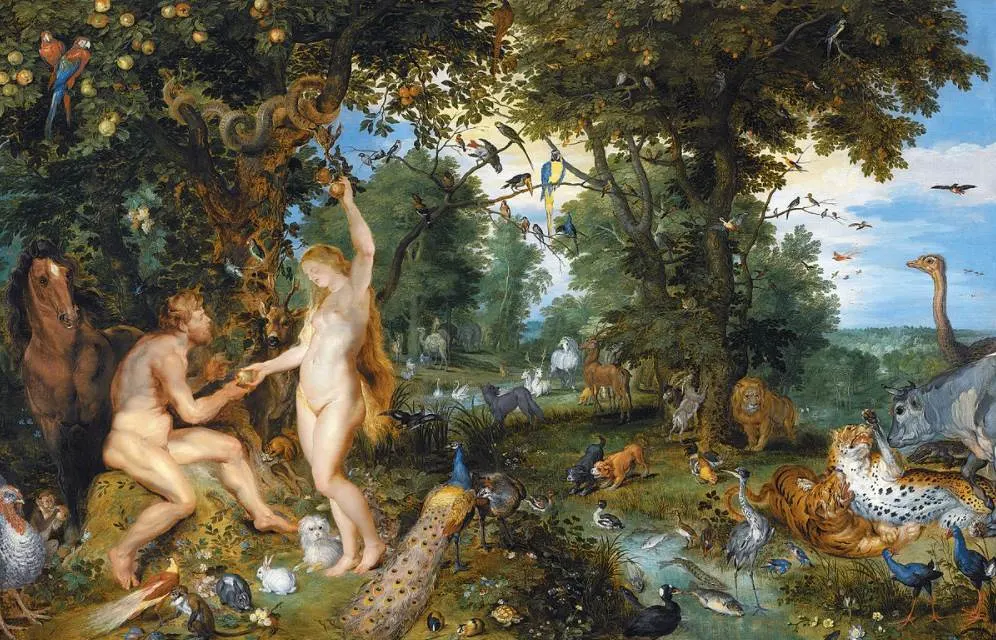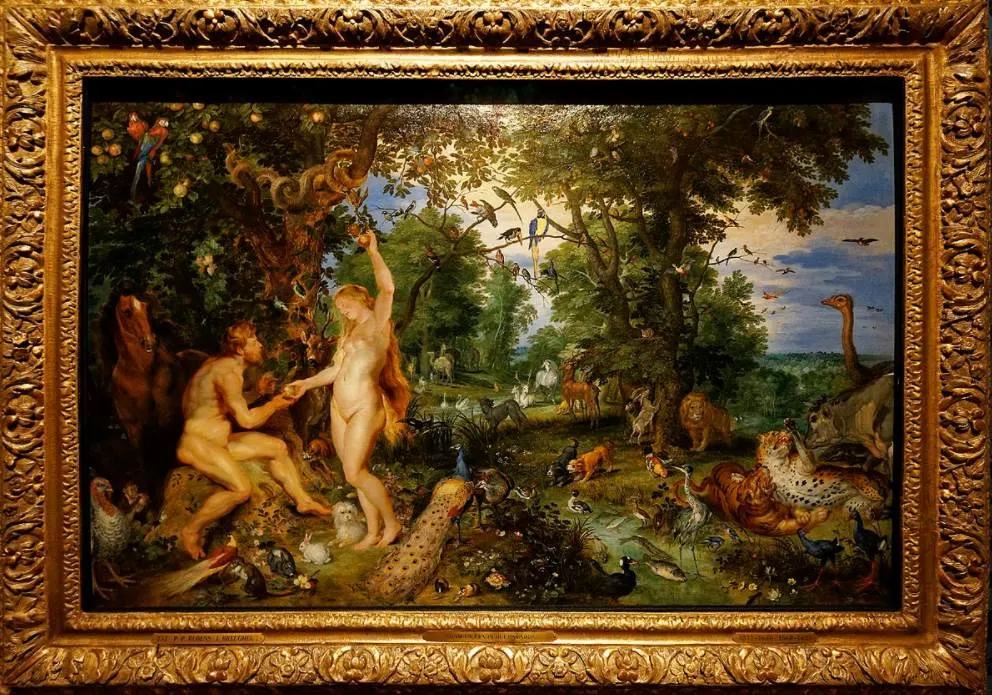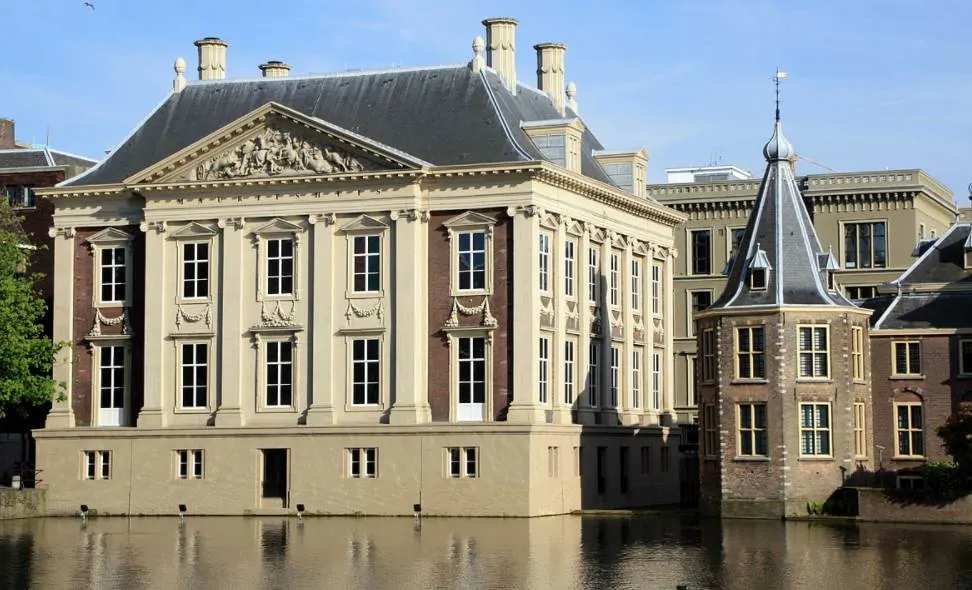When two of the greatest Flemish artists of the late 16th and early 17th centuries collaborated, they produced some of the most spectacular paintings in history. One of these depicts one of the most popular Biblical stories.
Let’s take a closer look at some of the most interesting facts about “The Garden of Eden with the Fall of Man,” a spectacular joint venture by a Late Renaissance artist and one of the most renowned artists of the Baroque era.
1. It was produced around 1615 by two famous Flemish artists
The Garden of Eden with the Fall of Man is an amazing painting by two of the most renowned Flemish artists in history, Jan Brueghel the Elder (1568-1625) and Peter Paul Rubens (1577-1640).
Jan Brueghel the Elder was the son of famous Renaissance artist Pieter Brueghel the Elder (1525-1569), a man famous for his depictions of rural landscapes and peasant scenes. His son continued his legacy and produced numerous amazing paintings, although he never knew his father as the man died the year after Jan was born.
Peter Paul Rubens was another prolific artist who produced a large number of masterpieces. He spent nearly the entire first decade in Italy where he developed his distinctive dramatic style.
Jan Brueghel the Elder did the same during the 1590s as he lived in Rome between 1592 and 1595 and briefly worked for Cardinal Federico Borromeo in Milan between 1595 and 1596. Both men eventually settled in Antwerp, a major port city in modern-day Belgium.
They were not only good friends but also collaborated on about 20 paintings of which this remarkable work of art is considered to be one of the ultimate masterpieces.

2. The signature of both artists describes their contribution
We know that this is a collaboration between the two artists because they both signed the work. Rubens signed the work in the bottom left corner as ‘PETRI PAVLI RVBENS FIGR’ and Brueghel in the bottom right corner as ‘IBRUEGHEL FEC.’
What’s remarkable is that their signature gives us a hint as to which elements in the painting they painted. Rubens’ signature means that he painted the figures of Adam and Eve and Brueghels’ signature means he produced the overall composition.

We can see the different styles coming together as the figures were painted with heavy brushstrokes in the typical Baroque style while the animals and natural elements were painted with such an extreme level of detail that the brushstrokes are barely visible.
3. Rubens’ contribution was a bit bigger than his signature suggests
If we take a closer look at the figures and how they were painted, then we can see that some other elements in the painting were painted similarly as well.
That’s because the contribution of Rubens in The Garden of Eden with the Fall of Man was a bit bigger than merely the figures as his signature makes us suggest.
We can positively identify some other elements as well because Rubens also painted the tree, the horse, and the snake. Jan Brueghel the Elder, also nicknamed “Paradise Brueghel” because this type of painting was his specialty, painted all the other elements.

4. It depicts the moment just before Adam bites in the forbidden apple
The painting depicts one of the best-known Biblical stories derived from Genesis 2:8–14. Adam and Eve stand beneath the Tree of Knowledge and a snake can be seen giving them apples.
They were warned not to eat from the fruits growing on this tree which represents the knowledge between good and evil. Unfortunately, Adam can’t contain himself and bites from the apple after which they are expelled from Paradise.
The painting depicts the moment just before Adam is about to bite the apple.
5. The monkey biting in an apple has a symbolic meaning
The artists included several symbols to make references to this story. One of these is a little monkey that can be seen biting the apple, a prelude to what is about to come next.
A monkey represented evil in the early 17th century because even though it had the appearance of a human being, they weren’t able to make a distinction between good and evil.

6. The grapes above Adam’s head can be seen as a metaphore
Another element in the painting that can be seen as a metaphor is the bunch of grapes that are hanging above Adam’s head. These are used to produce one which is a reference to the Holy blood of Jesus Christ.
In that sense, these can be a reference to the crucifixion of Jesus Christ which essentially marks the end of the Fall of Man.

7. How big is The Garden of Eden with the Fall of Man?
The ultimate goal of the painting was to overwhelm the viewer with the remarkable painting technique of the artist. The spectacular depiction of Paradise featuring countless exotic animals turned this into one of the greatest artworks produced in the Low Countries during the first decades of the 17th century.
The painting wasn’t produced at a monumental scale, though, which means the sense of awe was achieved by the extremely detailed depiction of the landscape and animals.
The oil on panel painting has dimensions of 74.3 × 114.7 centimeters (29.3 × 45.2 inches).

8. Where is the painting located today?
Little is known about the original commission of the painting but we do know that it was owned by a pan named Pieter de la Court van der Voort in or before 1710. This man lived in Leiden, a city in the Netherlands, and it was passed on to his heirs in the 18th century.
One of the most remarkable facts about The Garden of Eden and the Fall of Man is that it was purchased at an auction in Leiden in 1776 by Prince William V (1748-1806) for an incredible sum of 7,350 guilders.
The French appreciated the quality of the painting as well because they confiscated it and brought it back to the Louvre Museum in Paris, then called the “Musée Napoléon,” in 1795. It hung there until the Fall of Napoleon and was returned to the Netherlands in 1815.
After spending a brief period at the Prince William V Gallery on the Buitenhof square in The Hague, it was transformed into the Mauritshuis in the same city where it still hangs today.
This museum holds some remarkable treasures, including “Girl with a Pearl Earring” and “View of Delft” by Johannes Vermeer (1632-1675), and various paintings by Rembrandt (1606-1669).

